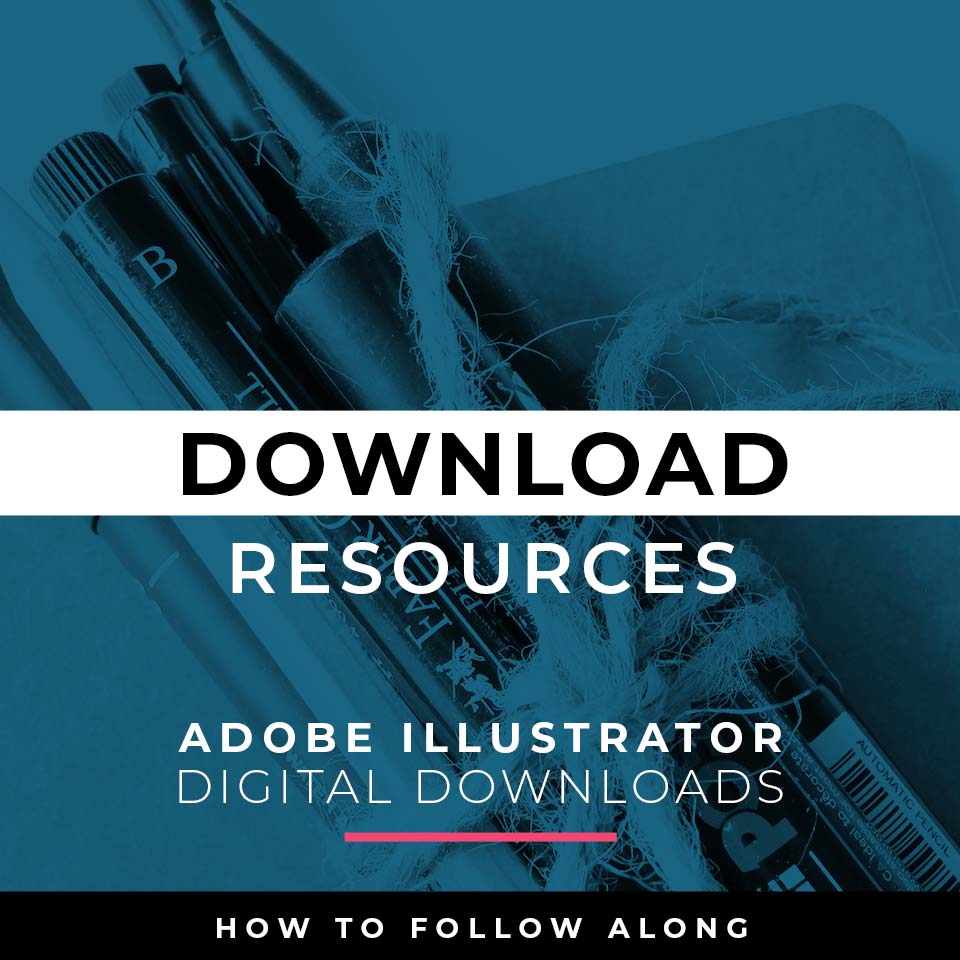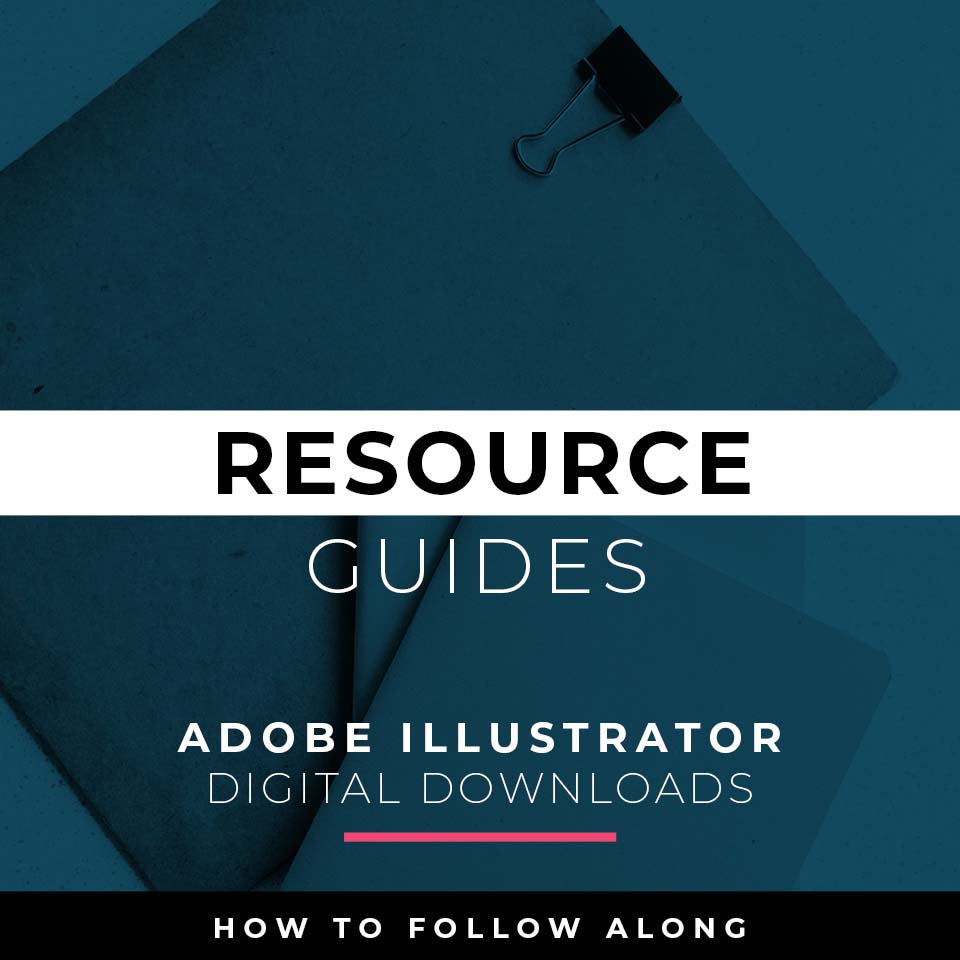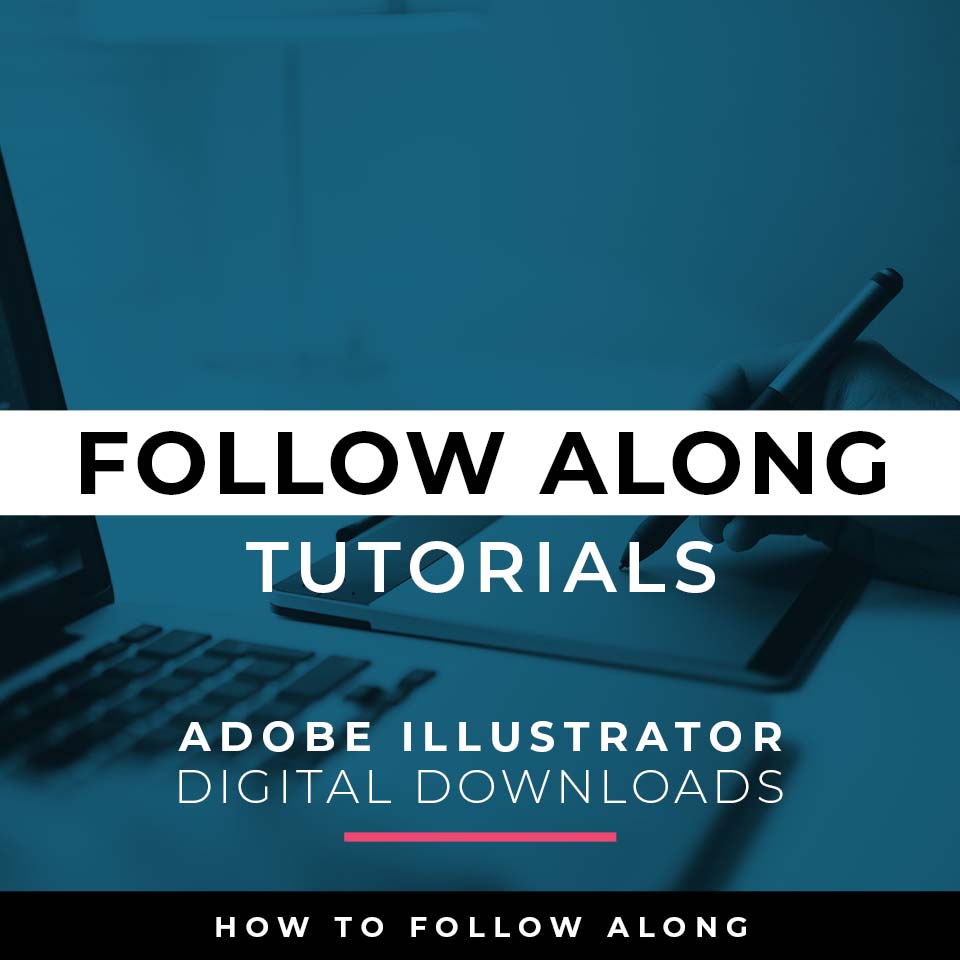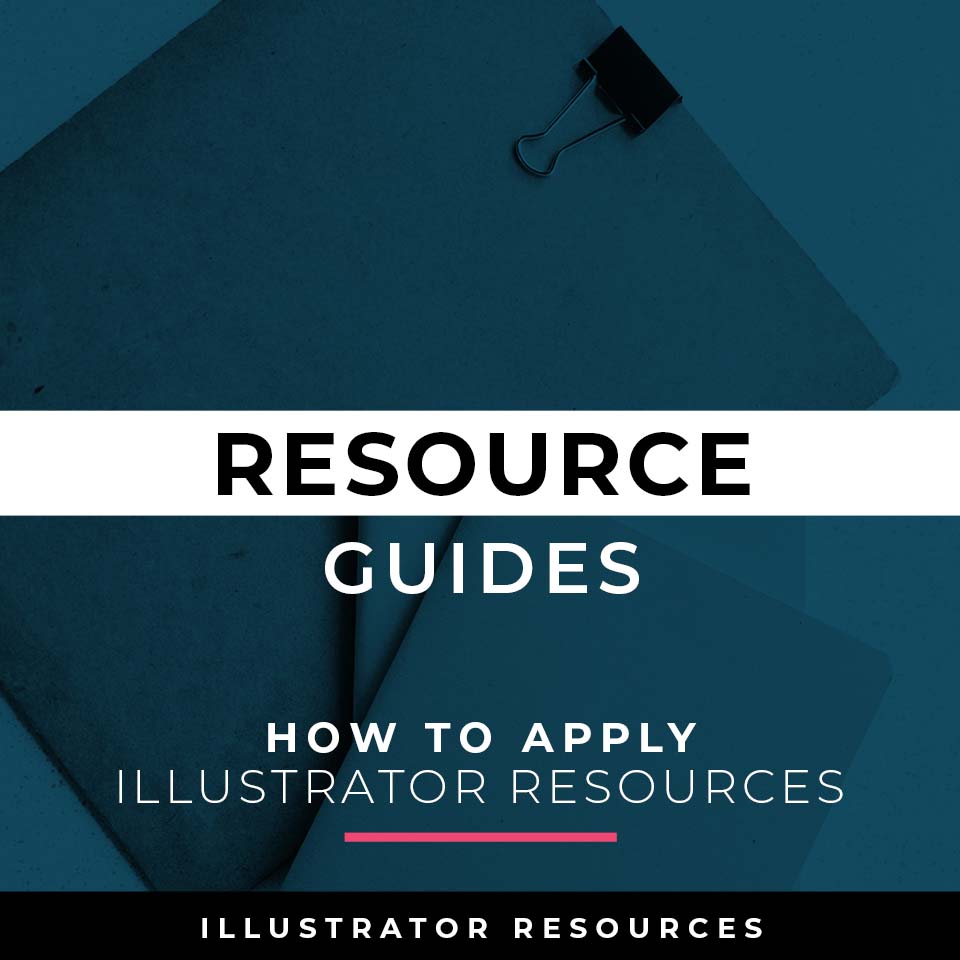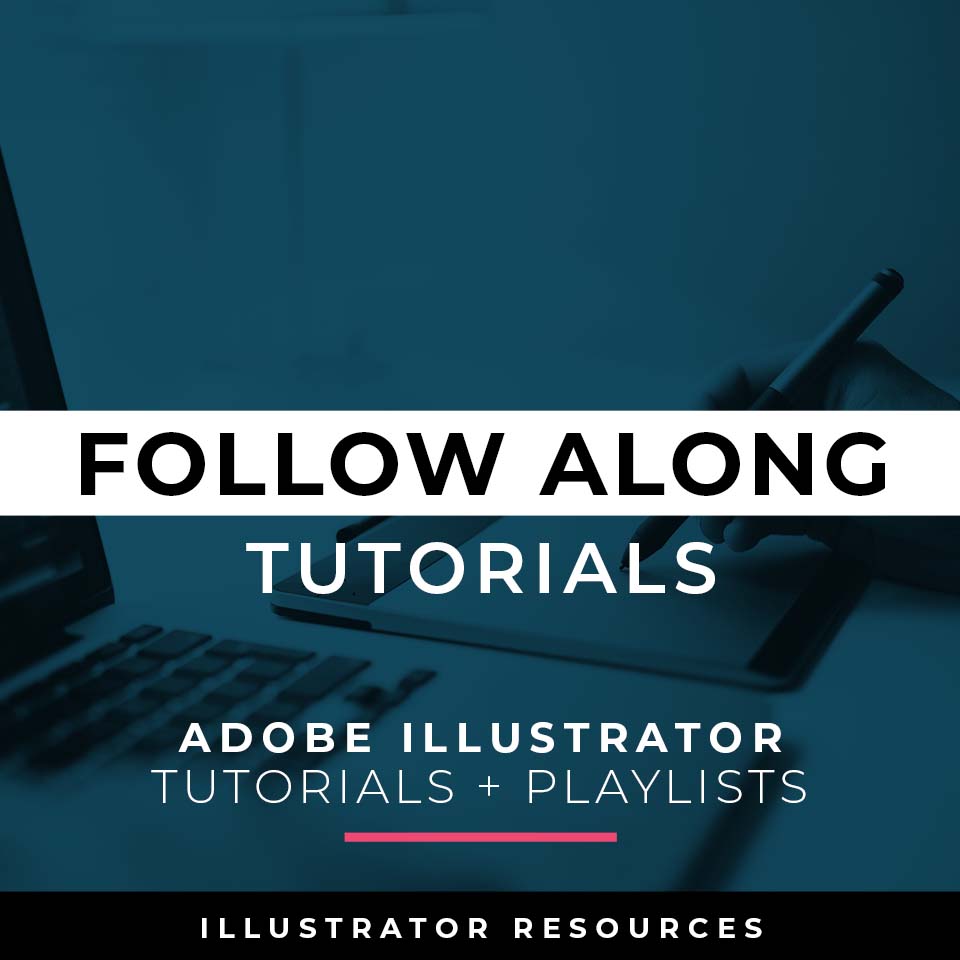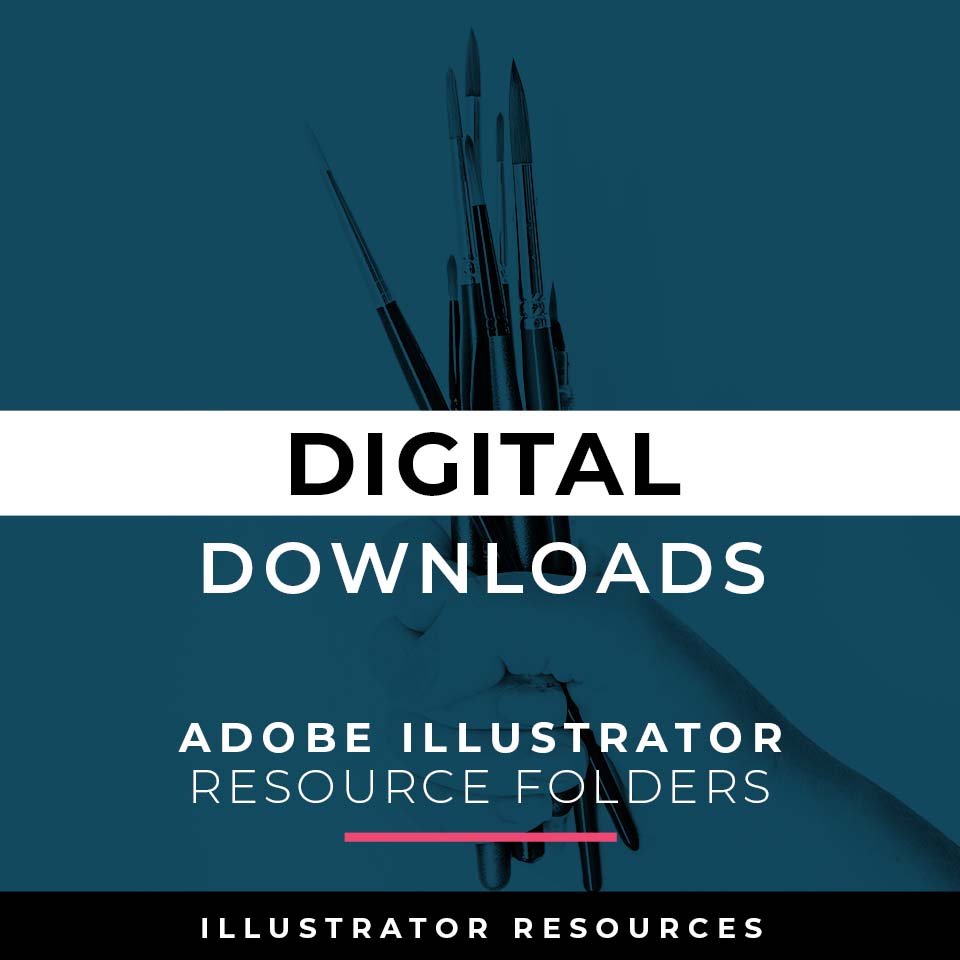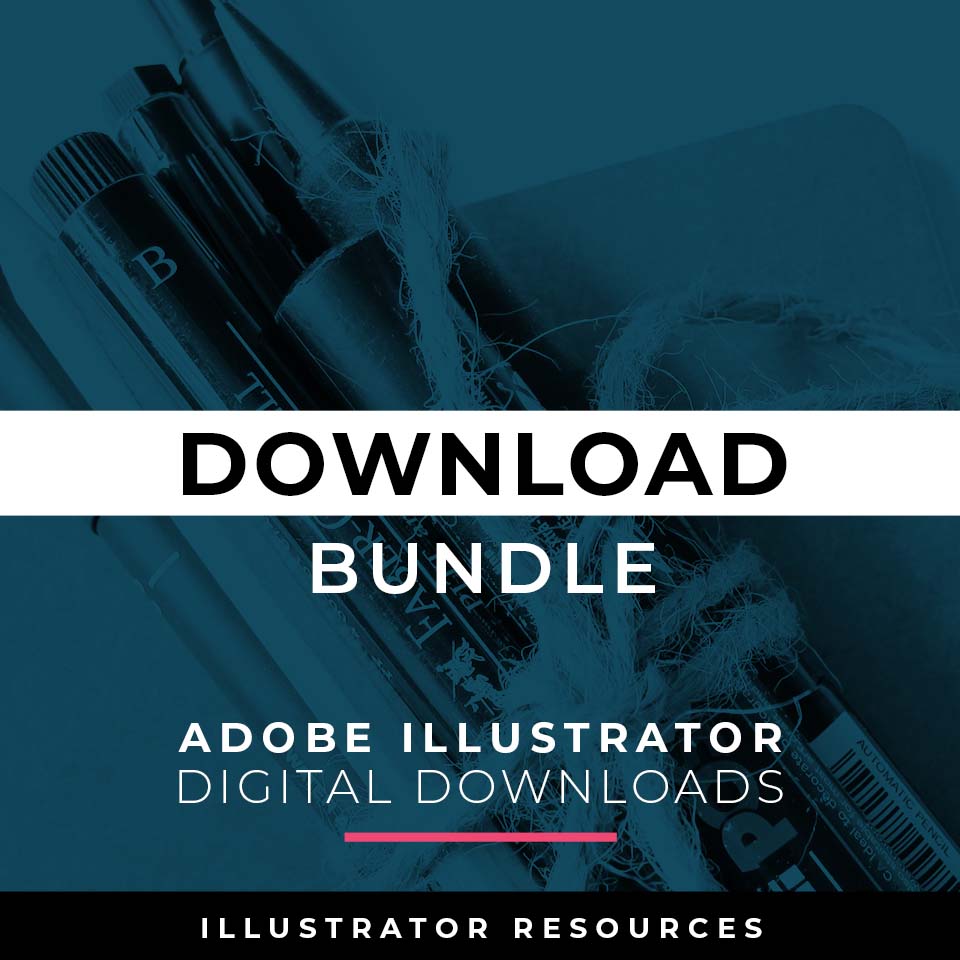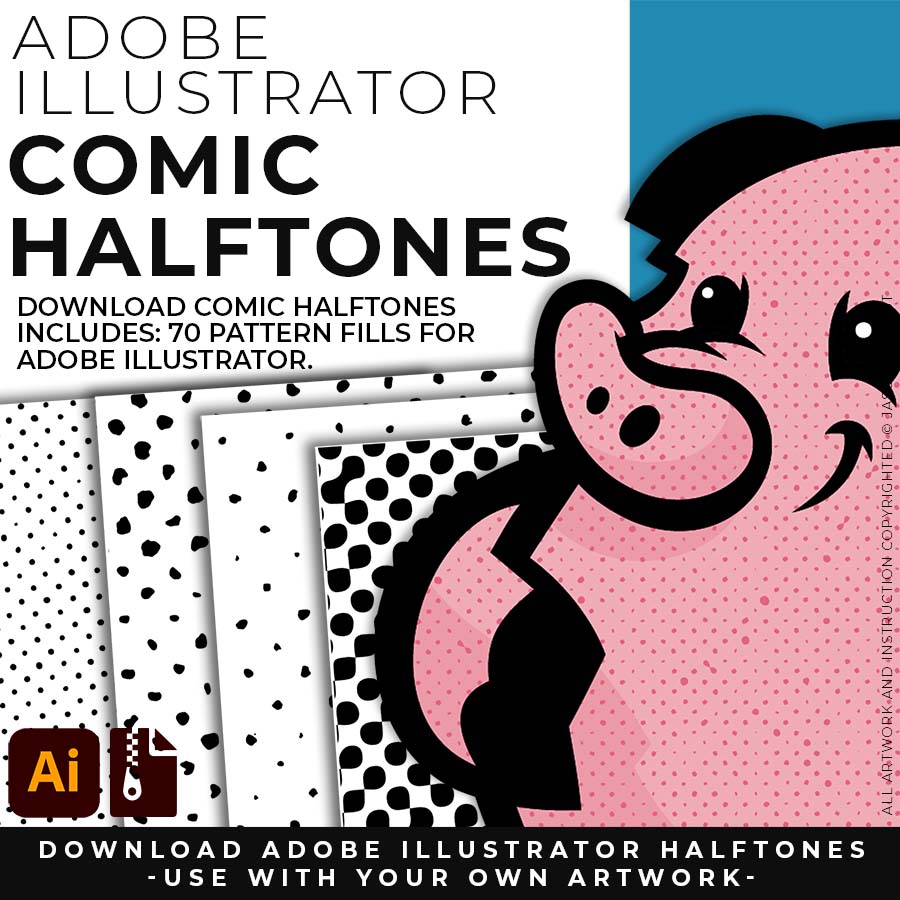STEP #1. DOWNLOAD FOLDERS: Many of you are jumping over from YouTube looking to download our Adobe Illustrator Brushes and Resource Folders. Download Brush Libraries, Comic Halftones, and BMP Textures for Adobe Illustrator.
STEP #2. EXTRACT ALL: Once you have downloaded and extracted the Resource Folders, they are ready to be used in Adobe Illustrator. Start with our Resource Guides and Tutorials to learn how to apply Brushes, Halftones, and BMP Textures.
STEP #3. APPLY IN ILLUSTRATOR: I recommend starting with our Beginner Guides, Illustrator Tutorials, and YouTube Playlists. Tutorials will focus on Building Tools, Editing Options, and Basic Coloring Techniques in Adobe Illustrator.

CARTOON BRUSHES: Cartoon Brushes are my go-to for Professional Logos, Cartoons, Mascots, and Branding. Use Cartoon Illustrator Brushes with the Pen, Pencil, or Paint Brush Tools to Apply different Line Variation to your Vector Artwork. 70 Cartoon Brushes includes Updated Cartoon, Cartoon 2, and Original Cartoon Brush Libraries.
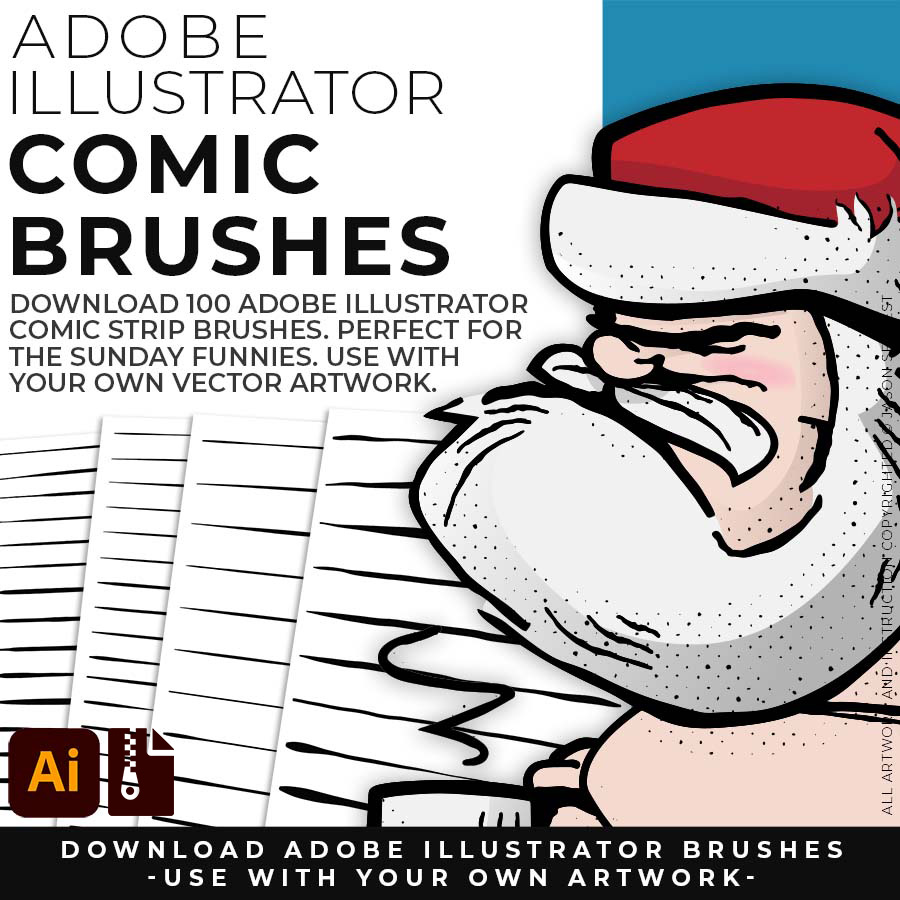
COMIC BRUSHES: Hand-painted and Comic Strip Brushes to get a lived-in feel back into your Vector Art. Comic Strips and Hand Painted are painted based on some of my favorite artists and cartoonists. These brushes are designed to look ready for the Sunday Paper. 100 Comic Strip Brushes includes Updated Comic Strip, Hand-Painted, Paintbrush, and Fine Liner Brush Libraries.
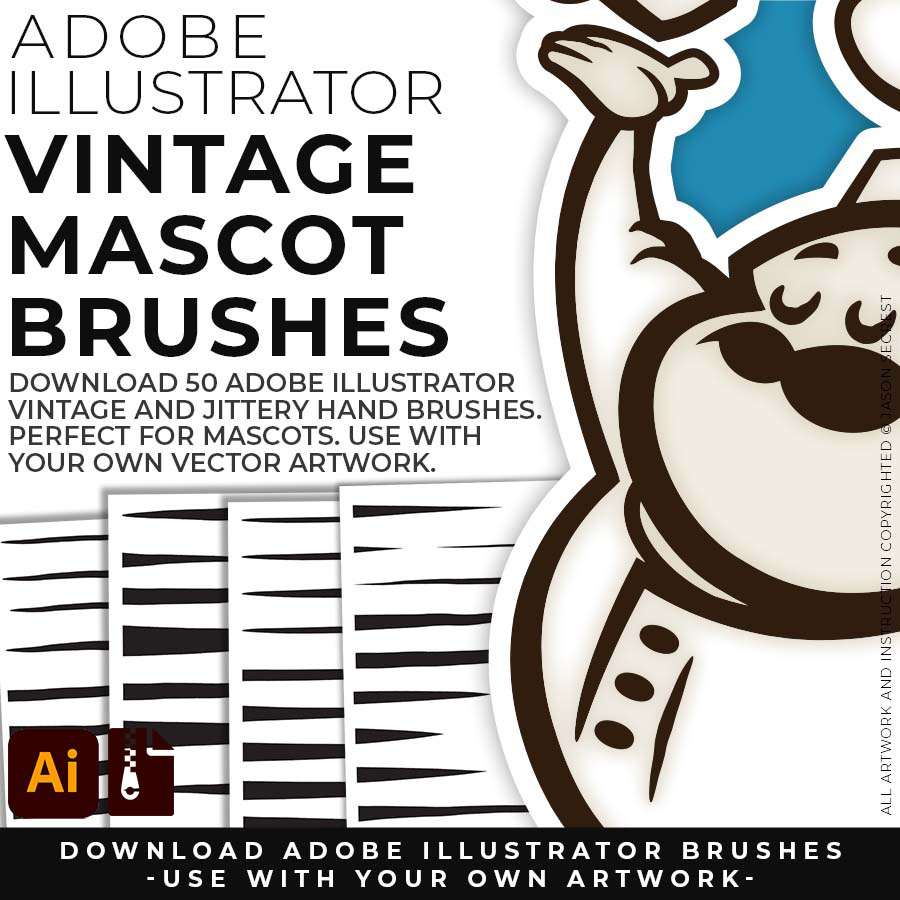
MASCOT BRUSHES: Jittery Hand, Caffeinated Cartoonist, and Rough Ink Brushes to Mimic Paper Bleed and Caffeine. Designed to be a little less stiff with your vector art. Use these Brush Libraries to get more distressed look or ink bleed back in your Vector Artwork. 50 Mascot Brushes includes Updated Caffeinated Cartoonist, Rough Ink, and Jittery Hand Brush Libraries.
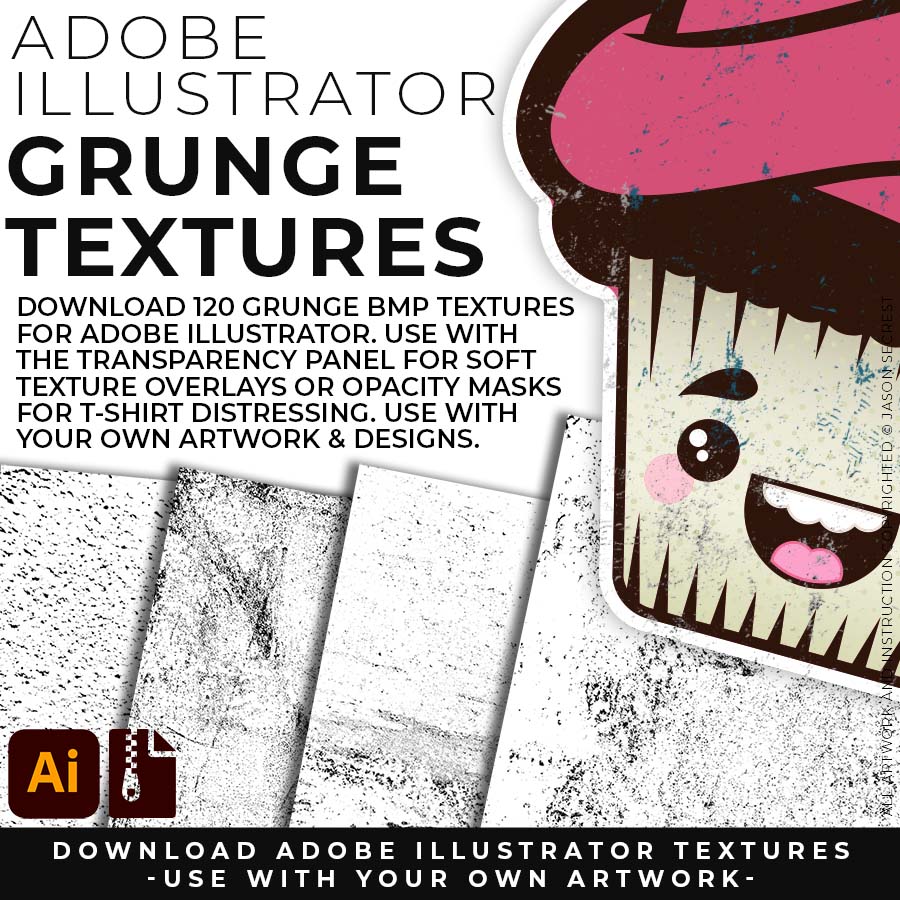
GRUNGE BMP TEXTURES: Grunge Distressing BMP Textures to Apply Opacity Masks to your Own Original Artwork and T-shirt Designs. Use BMP Textures to apply Grunge and Distressing Effects to your Artwork and Designs to use with the Transparency Panel and Opacity Masks for Adobe Illustrator. Great for t-shirt distressing using BMP Textures and Opacity Masks to show the garment color on your Own Original Artwork.
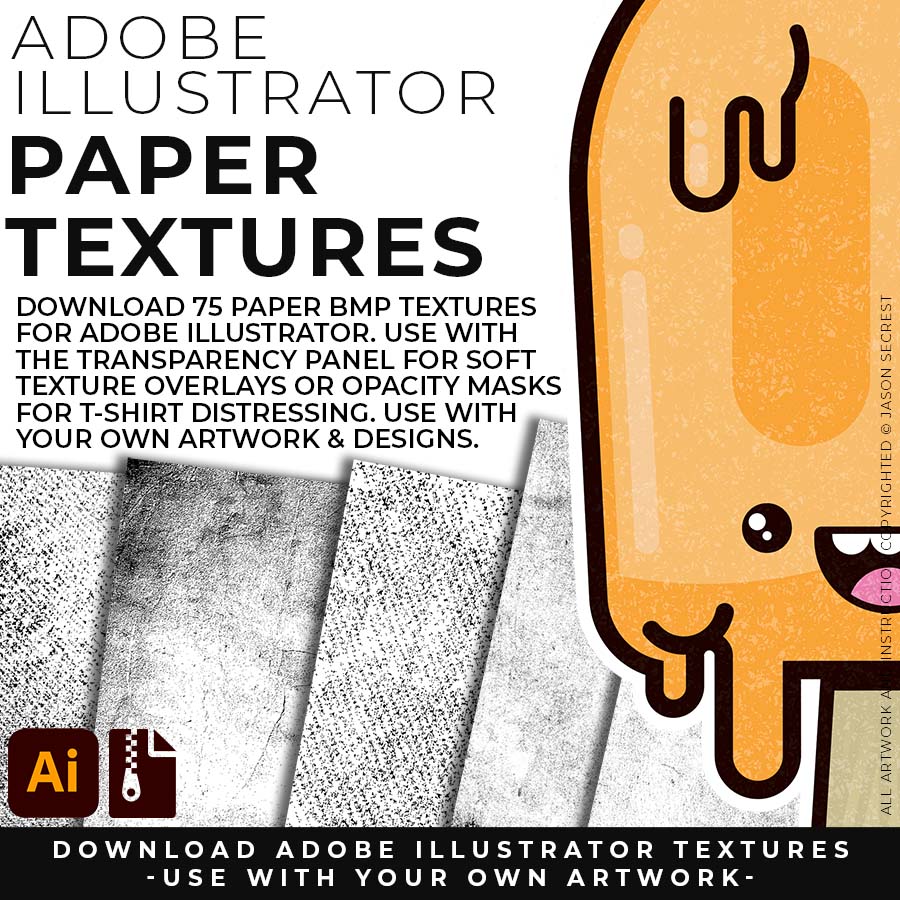
PAPER BMP TEXTURES: Paper BMP Textures to use along with the Transparency Panel to create soft texture overlays for your own original artwork. This is great for those of you who are using Textures for Web, Print, and Social Media Sites. Use Textures with Color Swatches, Transparency, Blending Modes, and Clipping Masks to create a subtle texture overlay on your print or web exports.
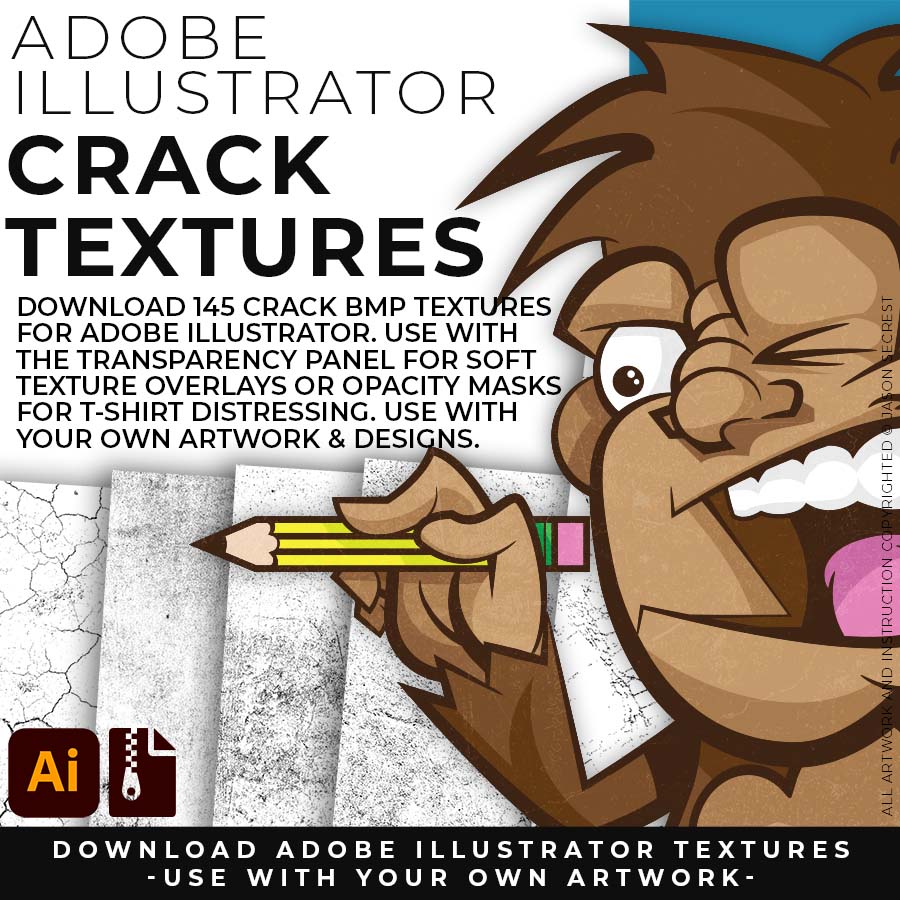
CRACK BMP TEXTURES: Cracks and Distressing BMP Textures to Apply Opacity Masks to your Own Original Artwork and T-shirt Designs. Use BMP Textures to apply Cracks and Distressing Effects to your Artwork and Designs by Applying Opacity or Transparency Masks for Adobe Illustrator. Created for T-Shirt distressing using your own Original Artwork and Opacity Masks to show through to the garment color.

BRUSHES BUNDLE: Brushes are specifically designed for Illustrators and Cartoonists to speed up their workflow. Brushes Libraries allow for Pressure Sensitivity if you are using a Tablet for Inking your Line Variation. Apply with Pen, Pencil, Shapes, or Paintbrush Tools. Adobe Illustrator Brush Libraries include our 70 Cartoon, 100 Comic Strip, and 50 Vintage Mascot Brushes.
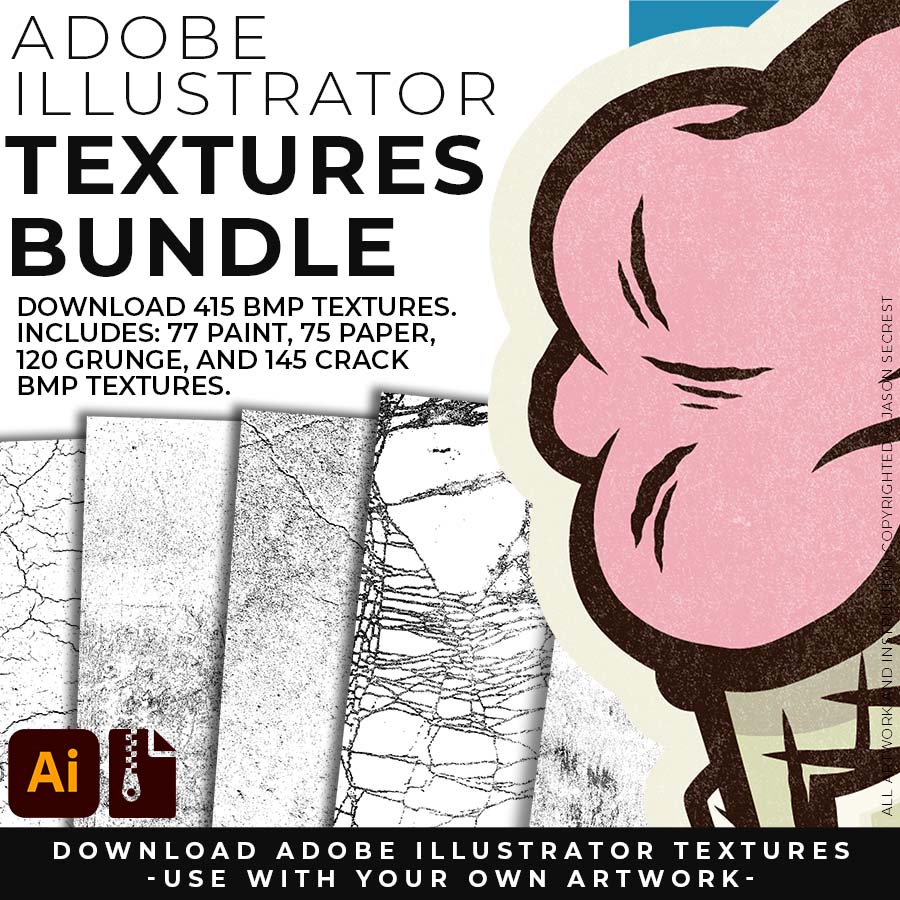
TEXTURES BUNDLE: BMP Textures are straightforward to use even if you are a beginner to Adobe Illustrator. Simply File-Place the Textures over your finished artwork to use with the Transparency Panel for soft overlays. Use BMP Textures along with Opacity Masks for T-Shirt Distressing. BMP Textures include our 145 Cracks, 120 Grunge Distressing, 75 Paper, and 77 Paint Splatter Textures.
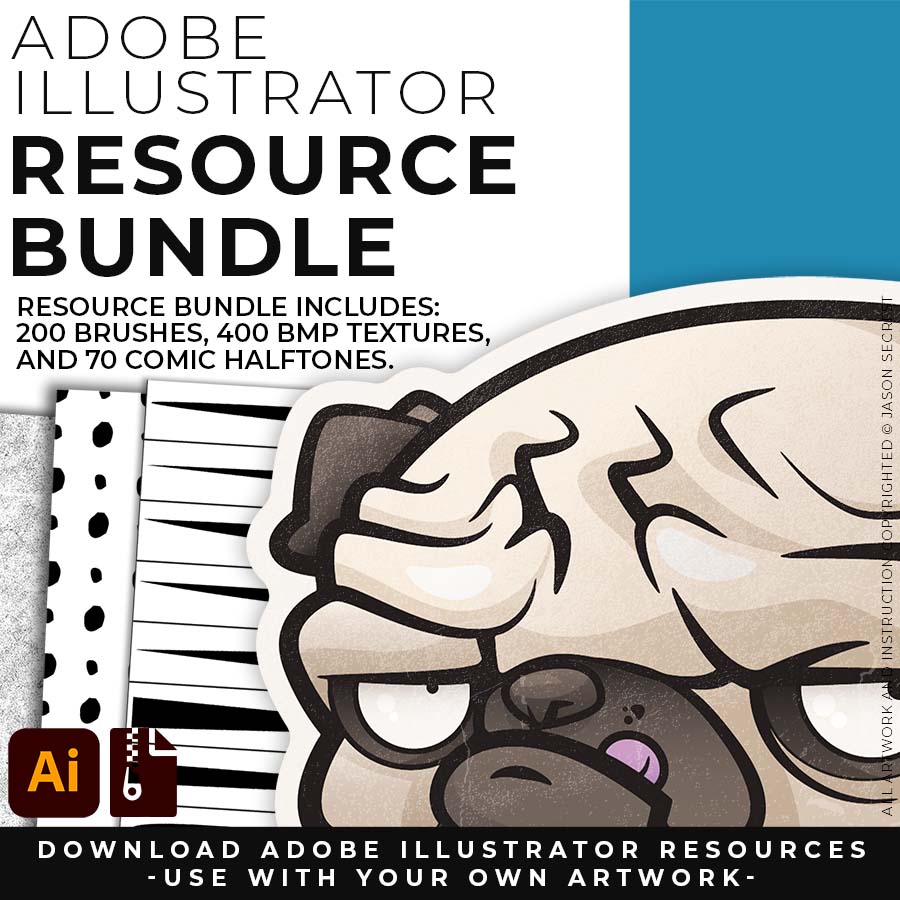
RESOURCE BUNDLE: Resource Bundle includes our Brush Libraries, Comic Halftones. and BMP Textures. Brush Libraries: 70 Cartoon, 100 Comic Strip, or 50 Vintage Mascot Brushes. Halftones include our 70 Comic Strip Halftone Fills and Halftone Value Scales. Texture Folders: 145 Cracks, 120 Grunge Distressing, 75 Paper, and 77 Paint Splatter Textures.
